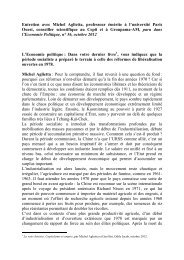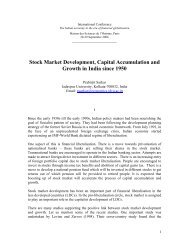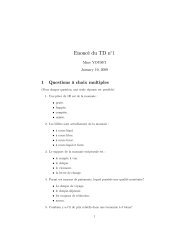Does the Entry Mode of Foreign Banks Matter for Bank ... - EconomiX
Does the Entry Mode of Foreign Banks Matter for Bank ... - EconomiX
Does the Entry Mode of Foreign Banks Matter for Bank ... - EconomiX
You also want an ePaper? Increase the reach of your titles
YUMPU automatically turns print PDFs into web optimized ePapers that Google loves.
investment in Czech, Hungary, and Poland, do it to follow and support its multinationalclients in <strong>the</strong> first place. Then, as <strong>the</strong> host countries’ economic and legal environmentsimprove, <strong>the</strong>y also look <strong>for</strong> new business opportunities. Their primary areas <strong>of</strong> activitiesare servicing multinational companies and big local corporates, and financinginternational trade thanks to <strong>the</strong>ir superior banking know-how. For <strong>the</strong> specific case <strong>of</strong>Hungary, according to (Majnoni et al., 2003), <strong>the</strong> better per<strong>for</strong>mance <strong>of</strong> Greenfield banksmay also be due to <strong>the</strong> introduction <strong>of</strong> new financial products.Our findings on <strong>the</strong> superior cost per<strong>for</strong>mance <strong>of</strong> Greenfields also lends somesupport to <strong>the</strong> <strong>the</strong>oretical literature on international M&As, which suggests thatsystematic differences in affiliate per<strong>for</strong>mance can emerge between entry modes(Bertrand, Hakkala, & Norbäck, 2007).6.3 M&As versus Domestic <strong><strong>Bank</strong>s</strong>In this section, we present regression results on <strong>the</strong> sub-sample <strong>of</strong> <strong>of</strong> M&As anddomestic banks. These results are shown in table 6 (1) and (2).The same reasoning applies as in <strong>the</strong> case <strong>of</strong> Greenfields versus M&As. We firstinclude only <strong>the</strong> mode <strong>of</strong> entry dummy, i.e. merger in <strong>the</strong> modeling <strong>of</strong> <strong>the</strong> inefficiencyterm (specification (1)). The result shows a negative although not significant coefficienton merger, which might be an indication that M&A banks are more efficient thandomestic banks.In a next step, we include variables that reflect size, structure <strong>of</strong> activities, marketshare, and <strong>the</strong> age effect in <strong>the</strong> modeling <strong>of</strong> <strong>the</strong> inefficiency term (specification (2)).Again, we obtain a coefficient on merger that is negative and insignificant. We <strong>the</strong>re<strong>for</strong>econclude that no cost efficiency difference is apparent between <strong>the</strong>se two types <strong>of</strong> banks.This result corroborates <strong>the</strong> one obtained by (Havrylchyk & Jurzyk, 2006) on a sample <strong>of</strong>eleven transition economies. It is also in line with (Correa, 2008) which finds that <strong>the</strong>per<strong>for</strong>mance <strong>of</strong> M&As is not significantly different from control country-indices.The size variable still suggests that bigger banks tend to be more cost efficient.The market share variable is significant and suggests that higher market share tends tolead to higher cost inefficiency. This result is <strong>the</strong>re<strong>for</strong>e in contrast with (Grigorian &Manole, 2002) which found that banks with more market share were more efficient.-30-




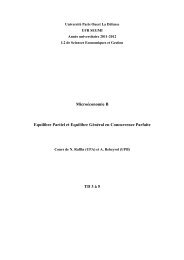

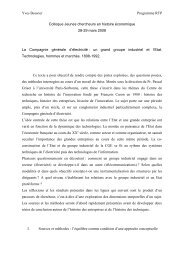

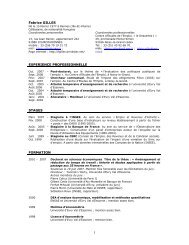
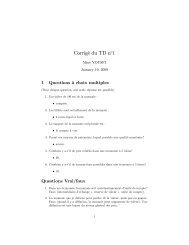
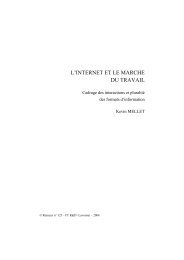
![P * 1 JTZWL_TZY OP^ Sd[Z_Sl^P^ !=m_m]Z^NmOL ... - EconomiX](https://img.yumpu.com/42226403/1/190x143/p-1-jtzwl-tzy-op-sdz-slp-m-mznmol-economix.jpg?quality=85)
